parkinsons
Latest

Study: Wearable sensors more accurately track Parkinson’s disease progression than traditional observation
Oxford University researchers found that by using a combination of wearable sensor data and machine learning algorithms, the progression of Parkinson’s disease can be monitored more accurately than in traditional clinical observation.
Malak Saleh10.17.2023
IBM fingernail sensor tracks health through your grip
The strength of your grip can frequently be a good indicator of your health, and not just for clearly linked diseases like Parkinson's -- it can gauge your cognitive abilities and even your heart health. To that end, IBM has developed a fingernail sensor that can detect your grip strength and use AI to provide insights. The device uses an array of strain gauges to detect the deformation of your nail as you grab objects, with enough subtlety to detect tasks like opening a pill bottle, turning a key or even writing with your finger.
Jon Fingas12.22.2018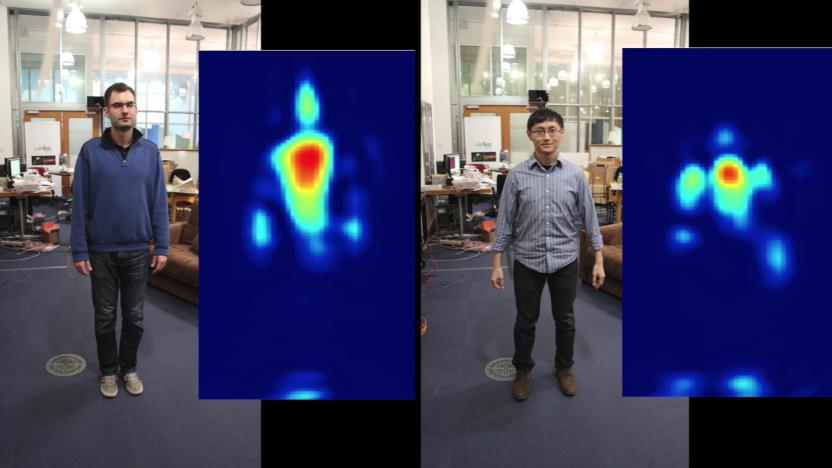
MIT built a health-tracking sensor that can ‘see’ through walls
An MIT professor has built a prototype device that can wirelessly track your health -- even through walls -- using a mix of radio signals and machine learning. Dina Katabi's gadget resembles a WiFi router and is designed to sit in your pad and monitor your breathing, heart rate, sleep, gait, and more as you go about your day. It's already doing that in over 200 homes around the US of both healthy people and those with Parkinson's, Alzheimer's, depression, and pulmonary diseases.
Saqib Shah09.13.2018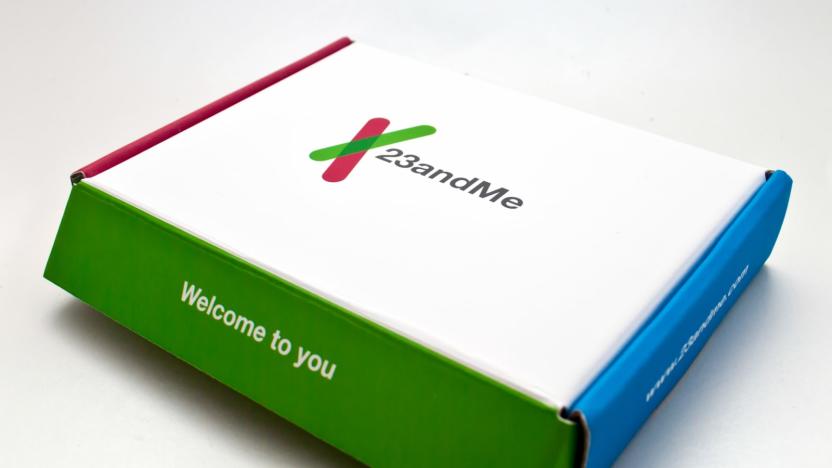
GSK to use 23andMe’s DNA library in drug development
DNA testing company 23andMe has partnered with pharmaceutical giant GlaxoSmithKline (GSK), in a bid to develop new drug treatments. 23andMe, which gives customers insight into their genetic makeup via postal saliva tests, has some five million customers -- a potential DNA database considerably larger than those generally available to the scientific community. "By working with GSK, we believe we will accelerate the development of breakthroughs," 23andMe CEO Anne Wojcicki wrote in a blog post.
Rachel England07.26.2018
Implant-free stimulation could treat brain conditions
Scientists know that stimulating the deeper regions of your brain can treat Parkinson's and other conditions. But there's a problem: they usually need to open your skull to place implants, which is both time-consuming and risky. Researchers may have a better way, though: they've invented a deep brain stimulation technique that only requires electrodes on your scalp. The trick is to create two high-frequency electrical currents that don't do anything by themselves, but interact with each other deep inside your brain. If you want to target different parts of the brain, you just change the frequencies and placement of the electrodes.
Jon Fingas06.04.2017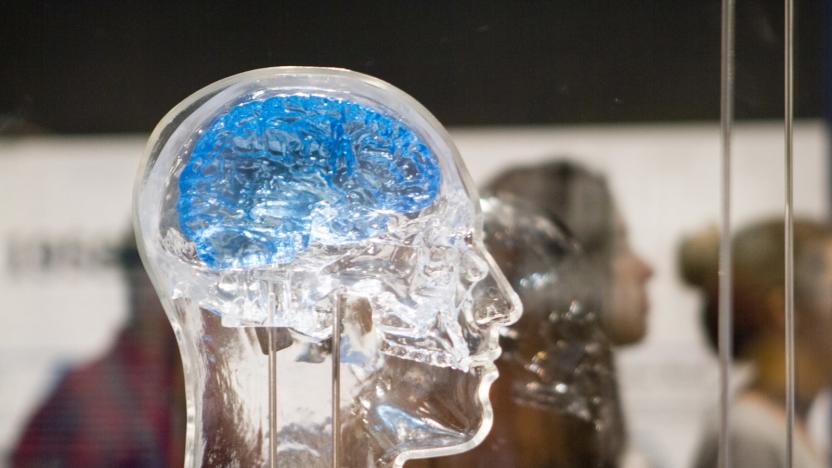
Brain mapping could lead to better Parkinson's treatments
When you repair electronics, you frequently test individual parts to see how they affect the whole. Why not try that with the brain? Stanford is doing just that. It developed a technique that fires specific kinds of neurons to map the brain and identify problems caused by Parkinson's and other diseases. The approach first uses optogenetics to make neurons activate in response to light, and follows up with a functional MRI scan to look for the increased blood flow that indicates activity in other brain regions. A computational analysis maps that particular neural circuit and helps determine its role.
Jon Fingas01.30.2017
Protein fingerprinting could shed light on Alzheimer's
Scientists know that the proteins in our bodies can sometimes fold and form clumps called amyloids, which lead to neurodegenerative diseases. However, they still don't fully understand the whole process -- there's just no efficient way to examine the clumps. Since understanding amyloid formation could be the key to preventing or developing treatments for conditions like Alzheimer's and Parkinson's, a team of researchers have developed a technique to measure individual protein molecules' properties.
Mariella Moon01.18.2017
Nike's power-laced Mags net millions for Parkinson's research
All the nostalgia around Nike's self-lacing shoe, the 2016 Mag, came together in a major way for a great cause. Today, the sportswear titan revealed it raised $6.75 million through its online raffle and two auctions, with all proceeds going to The Michael J. Fox Foundation. The money, as a refresher, will help the organization try to find a cure for Parkinson's disease. Michael J. Fox, who starred in the Back to the Future II film that made the sneakers popular, suffers from Parkinson's himself.
Edgar Alvarez10.20.2016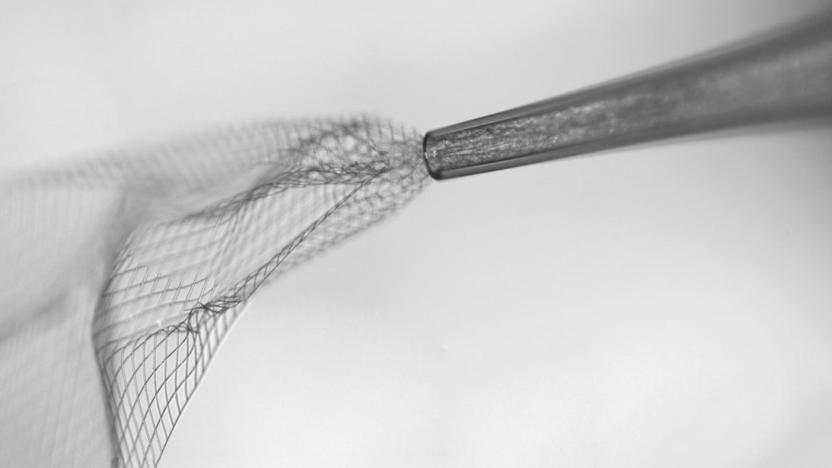
Brain-fixing injectable wires will soon be tested on humans
Last year, a team of Harvard University researchers revealed that they created a wire mesh doctors can inject into the brain to help treat Parkinson's and other neurological diseases. They already successfully tested it on live mice, but now that technology is ready for the next stage: human testing. The mesh made of gold and polymers is so thin, it can coil inside a syringe's needle and doesn't need extensive surgery to insert. Once it's inside your head, it merges with your brain, since the mesh has spaces where neurons can pass through.
Mariella Moon10.14.2016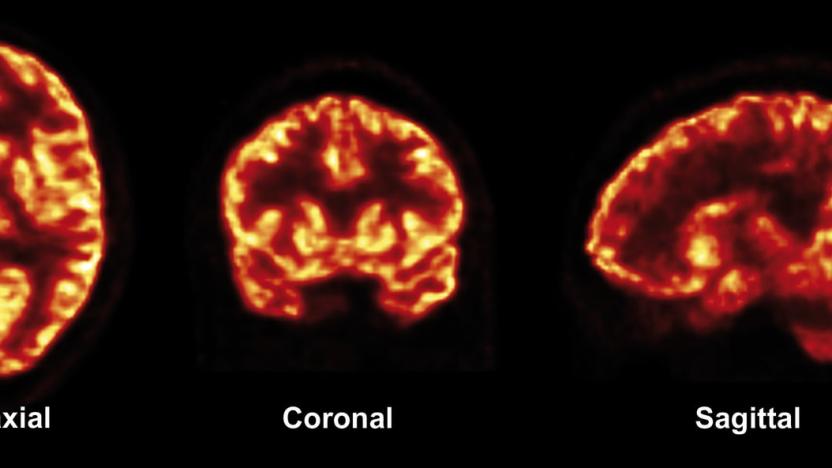
New imaging method reveals how Alzheimer's reshapes the brain
Researchers at Yale University have led development in to a new type of brain scan designed to detect changes in synapses associated with common brain disorders. Until now, researchers have only be able to detect these changes during autopsies, but by combining a Positron Emission Tomography (PET) scan with a new type of injectable tracer, Yale radiology and biomedical imagining professor Richard Carson was able to measure the synaptic density in a living brain. According to the findings published in Science Translational Medicine Wednesday, the technique could help doctors better understand and treat a wide range of neurological conditions from epilepsy to Alzheimer's disease.
Andrew Dalton07.21.2016
ICYMI: Cockroach torture, an app for Parkinson's and more
#fivemin-widget-blogsmith-image-567613{display:none;} .cke_show_borders #fivemin-widget-blogsmith-image-567613, #postcontentcontainer #fivemin-widget-blogsmith-image-567613{width:570px;display:block;} try{document.getElementById("fivemin-widget-blogsmith-image-567613").style.display="none";}catch(e){} Today on In Case You Missed It: A cybernetic cockroach how-to describes how to use an Arduino to control where a cockroach goes, which makes all of us uncomfortable.
Kerry Davis02.03.2016
Digital pens help spot early signs of brain conditions
Doctors frequently check for early signs of brain conditions like Alzheimer's and Parkinson's by looking at irregularities in your drawings, but it's an imperfect art based largely on the doctor's opinion. All too often, the only concrete signs show up by the time you've already been ravaged by the disease. MIT researchers might have a more effective way to catch these conditions early on, though. By using custom tracking software to monitor the output from a digital pen, they can more accurately predict the onset of brain conditions based not only on what you draw, but how you draw. Healthy people spend a bit more time thinking than scribbling; those with memory issues (such as Alzheimer's sufferers) spend a lot more time in thought, while Parkinson's patients tend to struggle with the drawing process.
Jon Fingas08.16.2015
Obama's 2013 'BRAIN' initiative results in remote-controlled mice
The first results to stem from President Barack Obama's 2013 "Brain Research through Advancing Innovative Neurotechnologies" initiative are in, Reuters reports. As noted in the journal Neuron, scientists were able to manipulate the brain circuitry of lab mice, making them move, stay still, eat or leave their bowls of food behind. This was accomplished through the use of DREADDs, "designer receptors exclusively activated by designer drugs." The DREADDs system uses genetically engineered brain neurons to create custom receptors that lock into manmade molecules, activating whichever neuron scientists target. The DREADD method is a noninvasive form of behavior control, first introduced about a decade ago as a way to turn neurons on or off -- the newest DREADDs are the first to be able to do both.
Jessica Conditt04.30.2015
How electrifying the brain wards off Parkinson's disease
Implanting electrodes in the brain and zapping it helps patients with Parkinson's and other disorders, but doctors have never been sure why, exactly. Now, researchers from UC San Francisco think that the therapy (called deep-brain stimulation, or DBS) works by altering neural timings, in much the same way a defibrillator resets heart rhythms. In a healthy brain, neuron firing is controlled by low frequency rhythms that sync up movement, memory and other functions. But the UC team found that the synchronization is too strong in Parkinson's patients, making it harder for them to move voluntarily.
Steve Dent04.14.2015
Vibrating pen makes it easier for Parkinson's patients to write
The ARC pen pictured above might look laughably large, but it could be the perfect option for folks with Parkinson's disease. It was created by a group of students from UK's Royal College of Art and the Imperial College London to combat a Parkinson's symptom called micrographia. That's characterized by a patient's handwriting becoming smaller and more cramped as they go along, to the point that it's not readable anymore. This pen prevents that from happening by stimulating key muscles through vibration (it's equipped with motors to make that happen), giving users more control over their hands. Further, its large size makes it more comfortable to hold than regular pens.
Mariella Moon03.31.2015
Michael J. Fox Foundation uses wearables for Parkinson's research
In order to collect data from patients, the Michael J. Fox Foundation for Parkinson's Research (MJFF) has teamed up with Intel to leverage the tech company's tracking prowess. The effort employs Intel's big data analytics platform to comb through stats collected by wearable devices that monitor symptoms. A "multiphase study" will gather data from patients in order to inform drug research and development. Rather than depending on written journals, wearable devices can gather info on slowness of movement, severity of tremors and sleep quality 24 hours a day. The duo also has a mobile app in the works that will add the ability for patients to input their medications and how they're feeling as addition details for researchers.
Billy Steele08.13.2014
First UK Google Glass trial gives Parkinson's sufferers more independence
Before Glass becomes a publicly available product, Google's quietly embarked on a campaign to get its iconic eyewear into the hands of those who can use it to tackle complex issues. After it gifted five pairs to researchers at Newcastle University, Google's allowed its wearable to undergo its first UK medical trial, where it's being used to support people suffering from Parkinson's disease. Researchers want to help patients live more independently, and they're already seeing results.
Matt Brian04.09.2014
Nike unveils the 2011 MAG shoe, to auction off 1500 pairs of the coolest kicks in Hill Valley for charity
You remember the first time you saw Back to the Future II, don't you? We all dreamed of a world filled with hoverboards and self-lacing shoes, and now Nike's made the latter a reality... sort of. Marty McFly's favorite high tops are now called the 2011 Nike MAGs and look just like the kicks in the movie, though it appears that you'll have to lace 'em up the old-fashioned way. They'll only be on sale during a ten-day period starting tonight at 8:30PM Pacific Standard Time, and no amount of flux-capacitation can score you a pair if you miss that window. 150 sets of shoes will be auctioned on eBay's Fashion Vault each day (sorry, US bidders only), and all the net proceeds will go to The Michael J. Fox Foundation to further Parkinson's research. Not only that, all the money made will be doubled through matching contributions. Nice job, Nike, now about those hoverboards...
Michael Gorman09.08.2011
European Parkinson's patients receive first Libra DBS implants to help alleviate symptoms
St. Jude Medical's announced that patients from Austria, Germany, and Greece are among the first to be implanted with Libra Deep Brain Stimulation (DBS) devices to alleviate the symptoms of advanced Parkinson's Disease. Specifically, it's able to reduce akinesia, rigidity, tremor, and motor complications associated with taking levodopa.The company's touting Libra and LibraXP as having the longest-lasting battery of any DBS in their class, meaning potentially less surgical procedures needed for for when they gotta be replaced. No word on when they'll be expanding use of the device, but we're sure it's coming.[Via Medgadget]
Ross Miller04.02.2009
Therapists now attempting to battle Parkinson's with Wii
The Wii is further branching out into new areas of therapy, as we find out that not only is the console helping wounded troops and those who have suffered strokes and the like, but also to aid those in controlling their Parkinson's. When our obsession becomes less of a box to kill boredom and more a box to heal human life, you can bet that makes us feel all warm and fuzzy inside.It's all part of a Medical College of Georgia study to see if the Nintendo Wii can aid in the occupational therapy of those with Parkinson's. So, while it isn't a full-fledged commitment to the treating the disease through Wii, it's an acknowledgment that the Wii has helped others and could be something to help more folks in the future."We're hoping to show a slowing of the progression of the disease and a decrease in medication while increasing function. If we can teach patients to exercise and do functional activities, maybe we can have them take less medications," says Dr. Ben Herz, assistant professor of occupational therapy in the School of Allied Health Sciences and one half of the main team behind this study. "Because the Wii is interactive and you have to do certain functional movements to be successful," he goes on to say, "it's an effective modality for working with Parkinson's patients," says Dr. Herz. "One of the therapists uses the Wii for timing and loosening up, and the other uses it for coordination and balance issues."[Via Go Nintendo]
David Hinkle04.07.2008